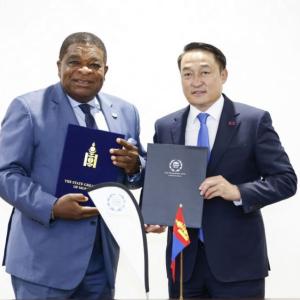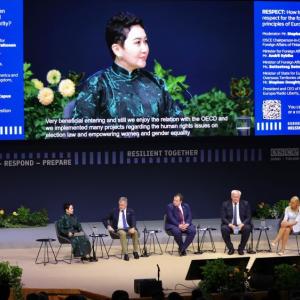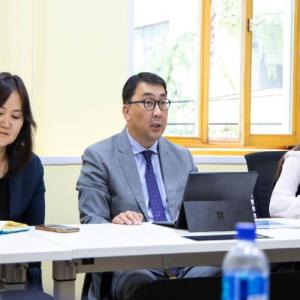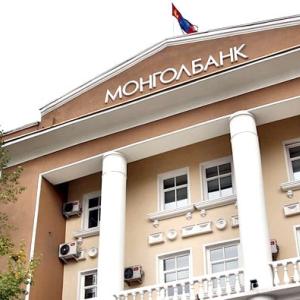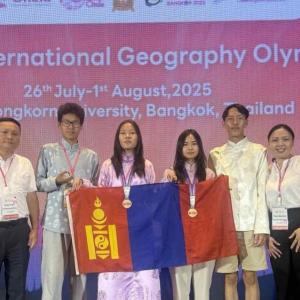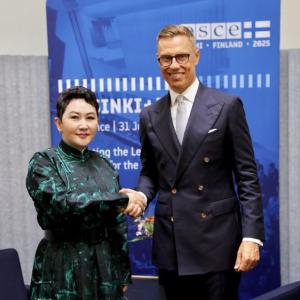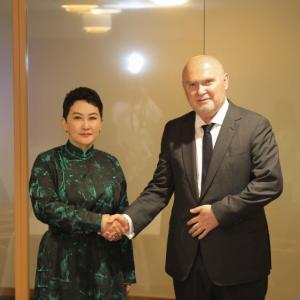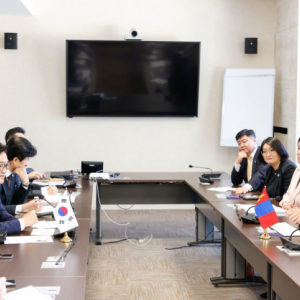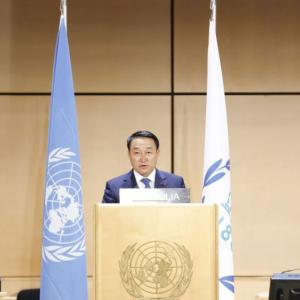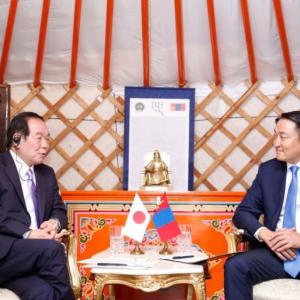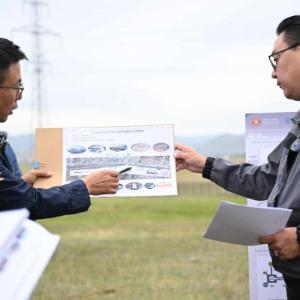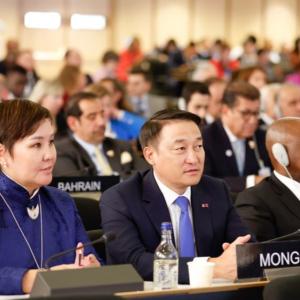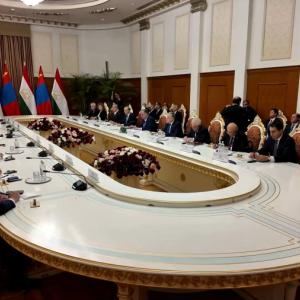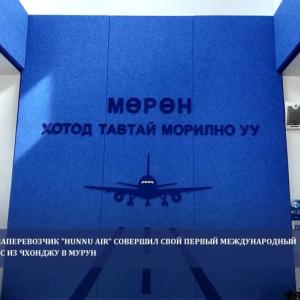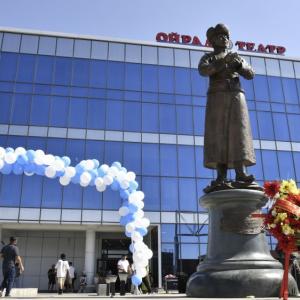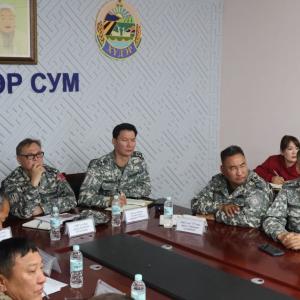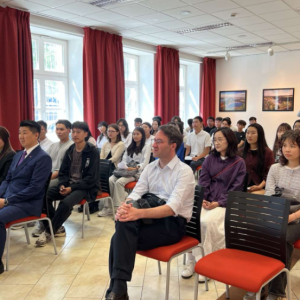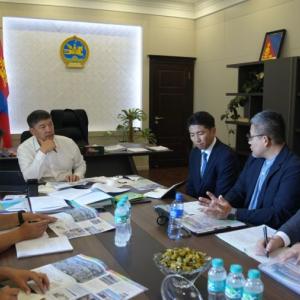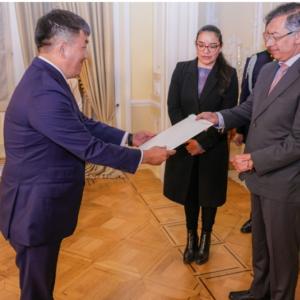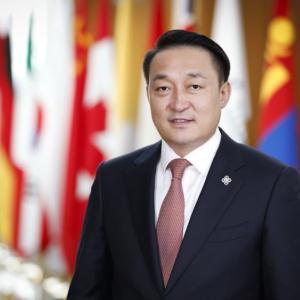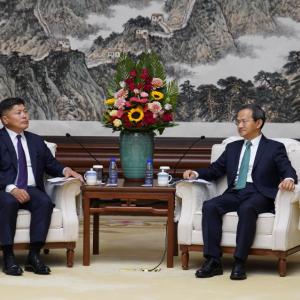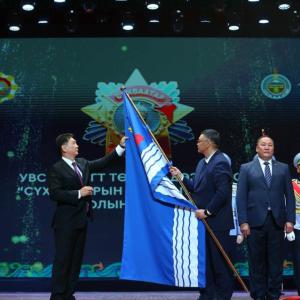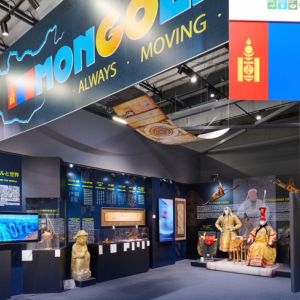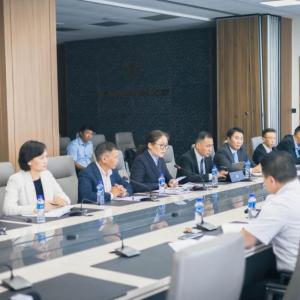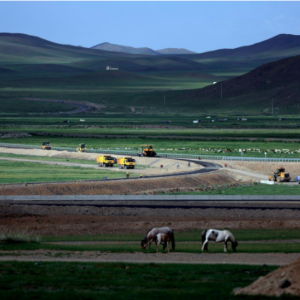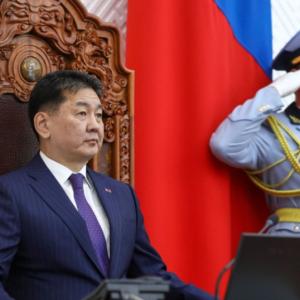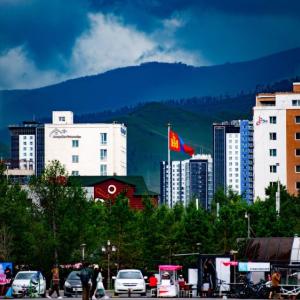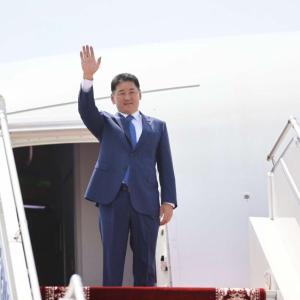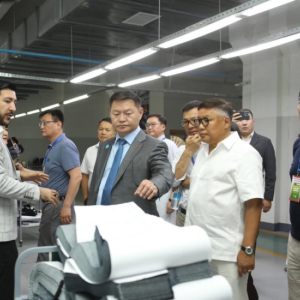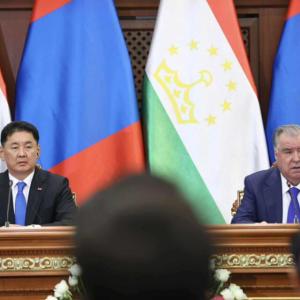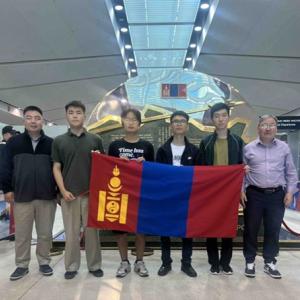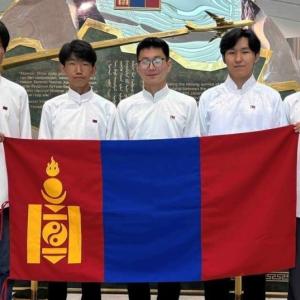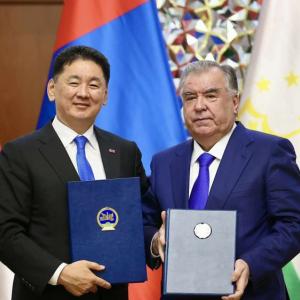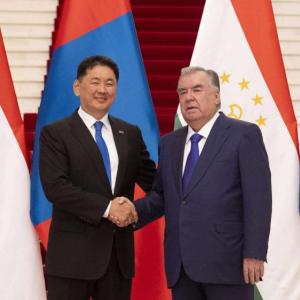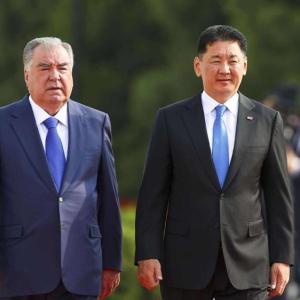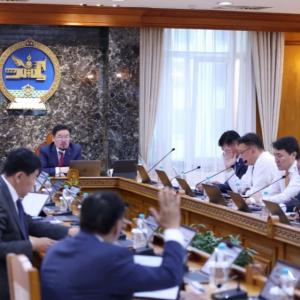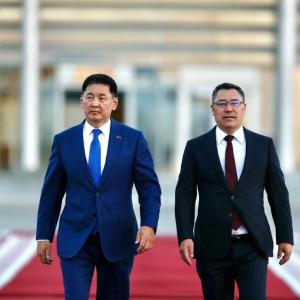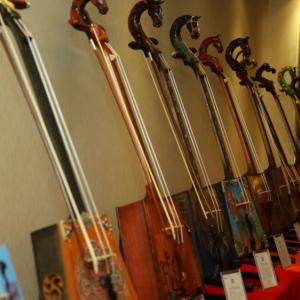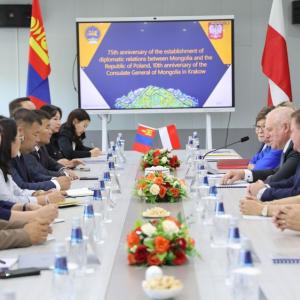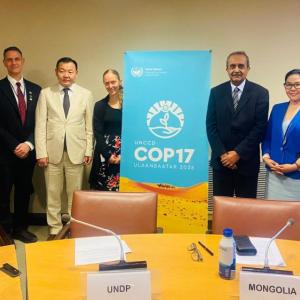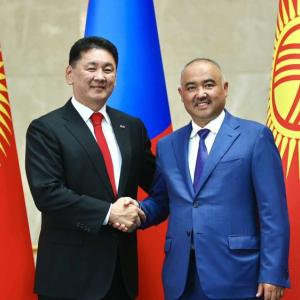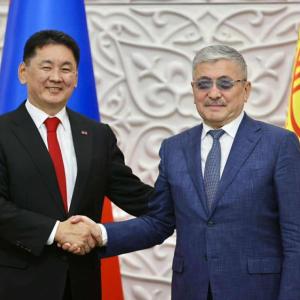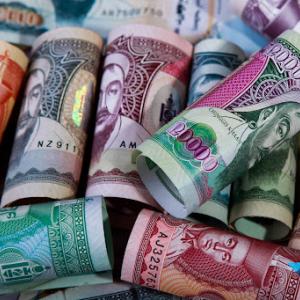Chinggis Khaan is a national identity for Mongolians
The Mongol MessengerInternational conference discusses Indo-Mongolian cultural exchange
Often referred to as one of the greatest leaders in world history, Chinggis Khaan is a national hero for Mongolians. Celebrated as the 'Man of the Millennium', he surely is the symbol of pride and unity of Mongolia. However, there are times when Mongolians find some aspects of the reputation of Chinggis Khaan in the global community not-agreeable. No thinking person is content with his idol being misunderstood and that’s how Mongolians have always felt when people describe Chinggis Khaan as a barbaric, ruthless leader of primitive nomads who only knew how to fight.
It is believed that the mission of properly portraying Chinggis Khaan’s image and deeds to the world will gradually be accomplished through many means including strengthening and expanding the scope of Mongolian studies, an objective is being identified and carried-out by the Government of Mongolia. As such, on September 27-29, an international conference themed ‘Chinggis Khaan, his legacy and Indian culture’ took place in Ulaanbaatar, enlivening the wishes of many Mongolians and pushing forward the quest to justify the merit of global figure, Chinggis Khaan.
Perceived as the first major interaction between the ‘think-tanks’ of India and Mongolia in recent years, the international conference was an attempt to put the relevance of Chinggis Khaan, his legacy and Indian culture into perspective and provide a realistic assessment of the importance of the theme from Indian and Mongolian points of view. A 20-member delegation led by Professor Lokesh Chandra, President of Indian Council for Cultural Relations (ICCR), an eminent scholar in Mongolian and Buddhist studies who conceived the idea of holding such a conference arrived in Ulaanbaatar for the conference.
On September 28, the conference opened with a ceremony which was attended by honorary guests including U.Khurelsukh, Deputy Prime Minister, B.Battsetseg, Deputy Minister of Foreign Affairs, G.Ganbold, Ambassador of Mongolia to India, Academician Sh.Bira, Honorary President of International Association of Mongolian Studies, R.Bat-Erdene, President of National University of Mongolia, Professor Lokesh Chandra, Dr. Suresh Babu, Ambassador of India to Mongolia and Namrata S.Kumar, Deputy Director General of the ICCR at the Ministry of Foreign Affairs.
In his speech, Deputy Prime Minister U.Khurelsukh underlined “The Great Emperor – Chinggis Khaan was known for his pluralistic attitude towards religions and cultures, and, to my standpoint, it might have served as the foundation for localizing the ‘Peace loving culture’ of India and Mongolia. There is no doubt that the academic works to be presented by our esteemed scholars today will show different angles of his state and military policies which might bring new perspectives for modern international affairs”.
During the opening ceremony, the Mongolian translation of a book titled ‘Modi Effect – Inside Narendra Modi’s Campaign to Transform India’ authored by Lance Price was launched. The book was translated by G.Ganbold, Mongolian Ambassador to India.
Conference addresses an inclusive agenda
It is well-known that the rise of Mongols and establishment of the Mongol Empire by Chinggis Khaan was one of the most important events in world history. Chinggis Khaan unified the Mongol people, organized a nearly invincible army of fearless nomadic warriors, and set into motion the first stage in the conquest of an enormous territory. With extraordinary skill and speed, the Mongols under Chinggis Khaan created the world’s largest land empire, stretching as its greatest extent from Korea to Hungary. But the legacy of Chinggis Khaan is well beyond the battlefield. And that’s what the conference aimed to talk about and relay.
Divided in following five sessions – ‘Traditional Image of Chinggis Khaan’, ‘Chinggis Khaan and Modern Mongolian Identity’, ‘Buddhist Dimension and Indian Culture’, ‘Geo-Political Implications’ and ‘Economic Prospects’, the conference was an ideal platform for the participating scholars from Mongolia and India to articulate and introduce their presentations and findings on the given agenda, and to exchange views and stances surrounding the eternal dialogue of Chinggis Khaan’s merits and demerits.

“A lot of thought has gone into planning the conference so we bring all the elements of the relationship between our two countries -- cultural, political, historical, social and economic. We want to give importance to our shared historical past, and move forward together. The outcome of the intellectuals’ conference is for the development of both countries”, said Namrata S.Kumar, Joint Secretary at the Ministry of External Affairs of India and Deputy Director General of ICCR. “This conference is the first of its kind. Secondly, it will lay the foundation for many such scholarly exchanges. The next conference could take place in India, or involve young scholars. This conference is the beginning of a long, strong dialogue” she explained.
Chinggis Khaan’s real legacy and image
Considered to be one of the greatest statesmen in medieval history, Chinggis Khaan gave the Mongols their own script based on the Uighur script and first Constitution 'Ikh Zasag’, and most importantly, a confederative tribal unit. The year 1206 AD marked the opening of a new era in the history of nomadic Mongols in general. Chinggis Khaan built a vast world empire faster than any people before him. He united Eurasia in a truly international trading system and encouraged new forms of communication. The Silk Road was around before him, but he modernized, organized and administered it to be the first truly international free market economy and the transmission of culture from East to West. The rich cultural exchange was made possible by opening the roads across Asia and the demand for new art from Mongol patrons. He also demonstrated the value of religious tolerance at a time when religious differences often led to wars.
Renowned Mongolian scholar Sh.Bira called Chinggis Khaan the ‘true father of the Mongolian nation’, ‘the Lord of the nation’ and ‘the flesh and blood of nomadic civilization’. Such a sentiment is the expression of nearly every contemporary Mongol. Thus, admired as a quintessential hero who demanded justice and cherished honesty, Chinggis Khaan inspired a renewed call to responsibility on the part of political leaders of Mongolia to honor, protect and learn from the legacy he left behind.

The dialogue on Chinggis Khaan’s real and lasting legacy, greatest contributions to making of the modern Mongolia and world, leadership and military skills, intellectual capacity and other outstanding qualities could narrate long enough to make a book with multiple volumes.
Chinggis Khaan as a modern Mongolian identity
Since the democratic revolution of 1990, there has been a call to revive traditional culture and Mongolian identity despite the fact that privatization and globalization have been followed as matters of national policy. It was during the struggle for democratic reforms in 1989-1990 that Mongolian identity issues came to the forefront. In this turn of events, Chinggis Khaan was naturally identified as the symbol of national identity. With growing nationalism among Mongols today, Chinggis Khaan has not only been symbolized as the epitome of infallible power and moral principle, but has also become one of the strongest instruments for arousing national pride.
Dr. Vaishali Krishna from Ramanujan College, Delhi University delivered a presentation under the theme ‘Revival of Traditional Culture and Modern Mongolian Identity’. “I have divided my paper into three parts. First, I talk about nomadism as a collective Mongolian identity, secondly Chinggis Khaan as a popular identity, and lastly Buddhism as an identity for Mongolians”, she told us.
“I find that Mongolian people are very generous and peace-loving. Mongolians and Indians are linked emotionally through Buddhism and their beliefs in peace and prosperity. We consider Mongolia a second home. Let me take the example of North-Eastern Indians who are so similar with Mongolians in terms of complexion, food, culture and other aspects. When we come to Mongolia, we don’t feel like we are coming to a different country,” she said. “The recent visit of Indian Prime Minister Narendra Modi to Mongolia has given a real boost to the relationship between India and Mongolia. Mongolia has taken a central place in India’s Act East policy and India is Mongolia’s third neighbor”, she added.
“The idea of holding this conference, an Indo-Mongolian interaction was conceived by Professor Lokesh Chandra”, said Suresh Babu, Ambassador of India to Mongolia. “Indo-Mongolian relations are age old; Professor Chandra mentioned that it is 2000 years old. Now, bilateral relations have come to a Strategic Partnership level following the visit of Prime Minister Narendra Modi. India is keen to develop and strengthen its partnership with Mongolia”, he elaborated.
Diplomatic relations of Mongolia and India were established in 1995 and bilateral cooperation has expanded in the socio-economic spheres since then. In 1973, Mongolia and India issued ‘the joint Mongolian – Indian Declaration’ defining the basic principles of bilateral friendly relations and cooperation. In 2015, the two countries declared a bilateral commitment to cooperate at the level of Strategic partnership in all possible sectors.
Since Chinggis Khaan and Buddhism have been integrated to symbolize Mongolian identity, a strong visibility of Indian culture in Mongolia can also be witnessed. The rich legacy of Buddhist linkages helped India and Mongolia develop very close relations in contemporary times so much that they are now known as ‘spiritual neighbors’. Thus, the conference was the foundation stone for further Indo-Mongolian cultural and spiritual exchange based on its rich history.
Aminaa Khatanzorig
Photography: T.Chimgee

 Ulaanbaatar
Ulaanbaatar
